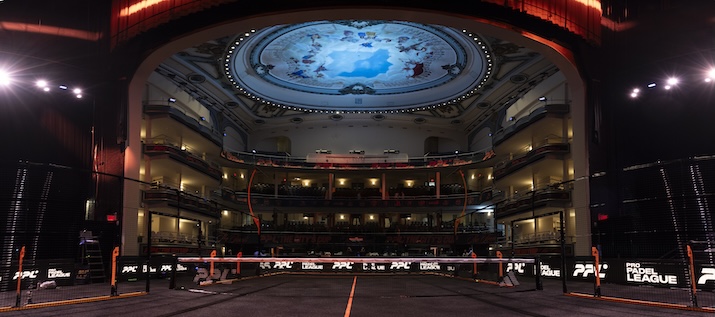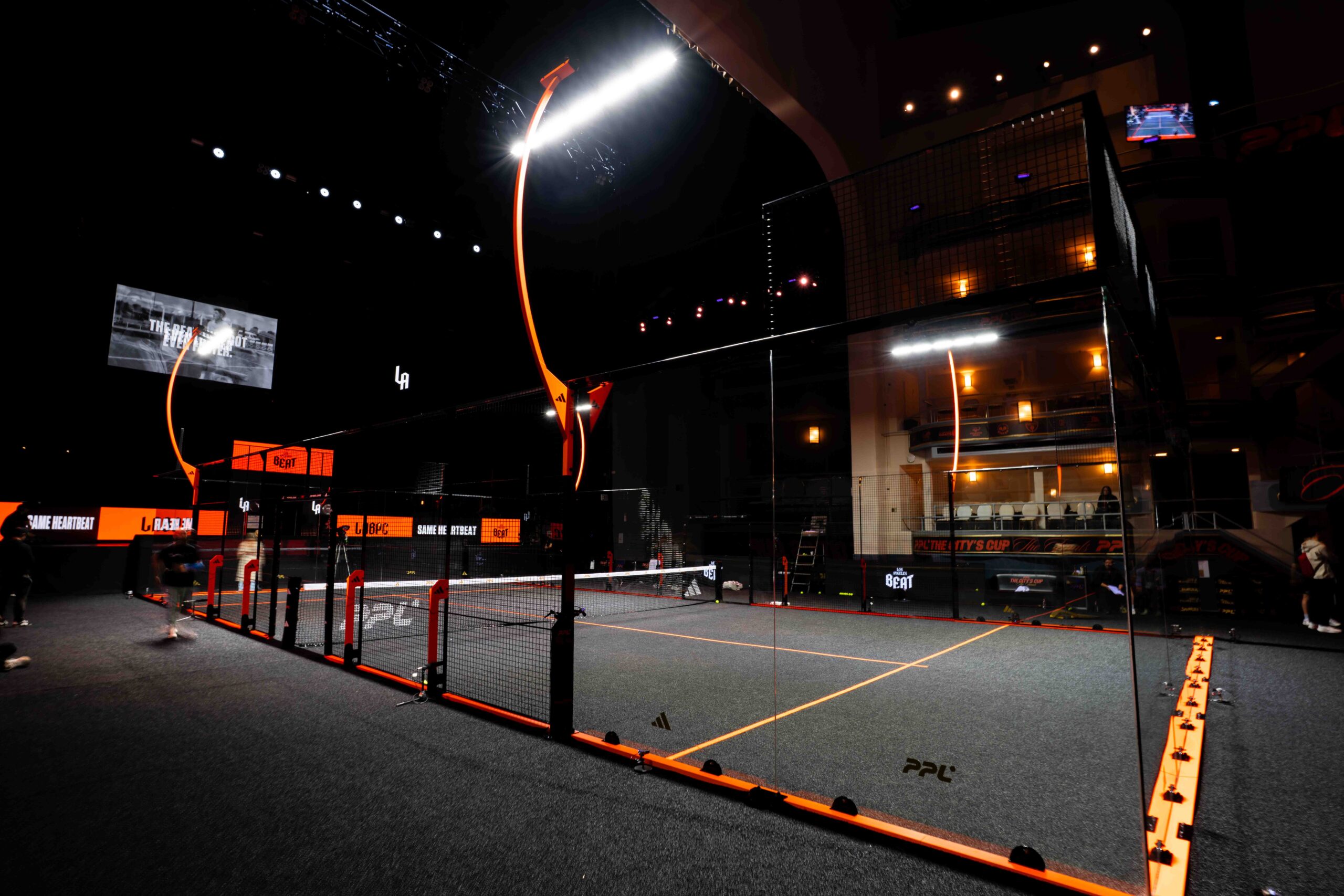An adidas special court converted the historic venue into an arena for the racket-sport event
The Pro Padel League transformed Manhattan’s Hammerstein Ballroom, a historic opera hall turned popular concert venue, into the setting for the sports property’s City’s Cup Finals and the conclusion of its 2025 season.
“For the PPL City’s Cup Finals [Oct. 16-19],” says PPL COO Brian Flinn, “the goal was clear: find a unique venue in the heart of Manhattan that met the specifications for our competition, event operations, and production and delivered an awe‑inspiring and remarkable stage for our fans, players, and partners. The Hammerstein Ballroom emerged as the best option meeting all aspects of our competition requirements while providing an iconic setting and outstanding production opportunities and complementing our other statement venues from earlier in the season.”
A core team of about 40 people completed the entire setup in three days, says Flinn, who oversaw the event’s overall production and operations. The load-in process began on Oct. 12, and staffers had the court ready by the morning of Oct. 15. Operationally, everything was finished by the morning of Oct. 16.
Setup for the PPL City’s Cup Finals was completed in three days by a crew of about 40. (Photos: PPL)
“The Hammerstein Ballroom met all the non‑negotiables, but we still had to be incredibly creative about how best to build our infrastructure into the renowned concert hall,” he explains, noting back-of-house needs like dressing and training rooms, catering, and office spaces.
Key partners AFP Courts and adidas designed, engineered, and manufactured a special‑edition adidas PPL High Competition Court, which featured “a minimalist, pillar‑free panoramic structure that enhanced the player experience and broadcast visibility,” says Flinn. He adds that the court was finished with a special fluorescent paint that glowed in the dark when paired with UV lighting.
With the Hammerstein Ballroom serving as the venue for the finals, the PPL had to “entirely rethink the fan experience,” he says, citing ingress and egress, sightlines, concessions, merchandise, and marketing activations for sponsors. The PPL could also capitalize on preexisting production infrastructure around seating, lighting, and audio within the event space.
He notes that “seating infrastructure created several opportunities for us, including the opera boxes on the east and west sides of the building, which gave fans a unique opportunity to view professional padel from a bird’s‑eye view — looking over and into the court from an angle most will never get to experience — in addition to traditional stadium seating. The feedback we received was overwhelmingly positive.”
Since the Hammerstein Ballroom was designed to elevate the audio experience, it served as a perfect venue for the finals, given the unique sounds players’ racquets make when they connect with the ball. “The sounds of the game were even more noticeable and certainly made an impression on fans,” Flinn says. “Additionally, the ballroom gave us the opportunity to produce special player introductions, championship celebrations, and DJ sets between matches.”
The PPL and its production partner MediaPro produced two international feeds (one in English, the other in Spanish) for more than a dozen global broadcasters, including DAZN, DIRECTV, FanDuel Sports Network, Telemundo, Tennis Channel, and Tubi. Additionally, there was a separate signal for the padel league’s YouTube channel.
The PPL worked with key partners AFP Courts on the court installation at the Hammerstein Ballroom.
MediaPro deployed 14 cameras to broadcast the event, including five POVs, three long‑lens cameras (up to 90X), two super-slo-mos, one overhead, and one handheld gimbal.
Paul Giblin and Peter Consuegra served as the English-language broadcast talent; Javi Carrasco and Jorge Belmont, the Spanish-language. Eugenia Károlyi Popcev was the event’s emcee.
“Our production partner MediaPro, led by Jean Manuel Jiménez and Daniel Totani, integrated live interviews with players during warmups, a first for any professional padel organization,” says Flinn. “The format saw an incredible response from fans on social media.”
Betting, Personalized Fan Experience, VAR
As part of the City’s Cup Finals, prediction market Kalshi offered padel fans an opportunity to bet on the outcome of each match. Komo Technologies launched a personalized fan experience featuring trivia and polls, among other features. In tandem with Foxtenn, a statistics provider, the PPL also leveraged Video Assistant Referee (VAR) technology for in/out and line calls, incorporating the content into the broadcast as well as social-media content.
Key vendors and third-party agencies that the PPL worked with on the event’s productions included GSE Worldwide (event production), Crossfire AV, AFP Courts (court installation), Ortega Logistics (court freight), PM1 (stadium seating), Great Performances (catering), Beyond Merritt (event design), United Rentals (power), MediaPro (broadcast and streaming production), Foxtenn (live scoring and VAR), and Komo Technologies (fan engagement).
Approximately 100-plus individuals per day were involved in the City’s Cup Finals, included full-time and part-time staffers, vendors, contractors, and broadcast talent.



